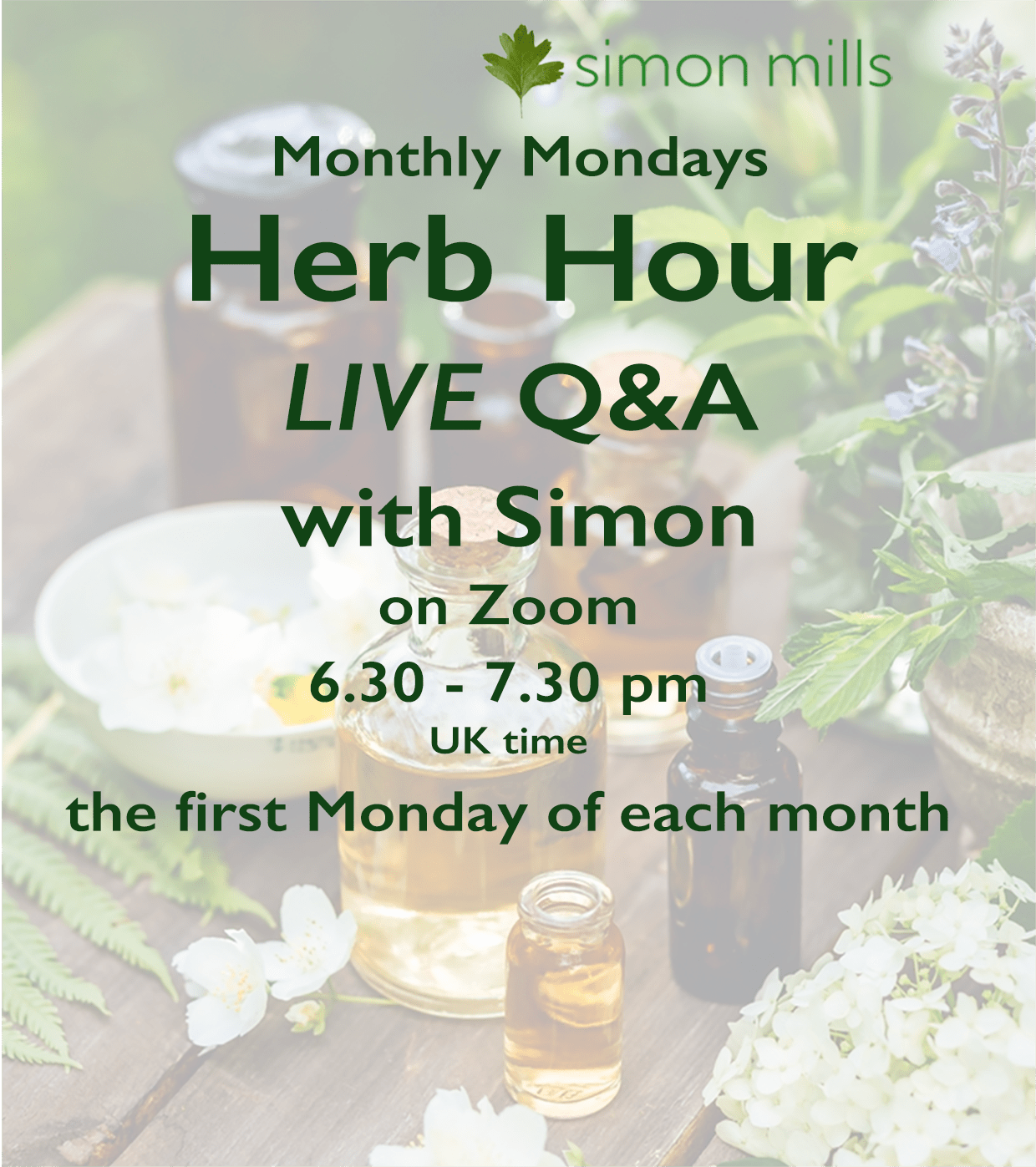Symptom Guides
This page is progressivly populated by Instagram posts that ask the question ‘What is YOUR … asking you do do?‘

Plant remedies work much better when we see symptoms as SIGNPOSTS rather than just targets. If we understand what they tell us about what is going wrong underneath we will fit the remedies much better. That’s very different from modern ways of just shutting the symptom down – and then have it pop back up again!
The symptom list is building. Please come back for updates!
Cough
Coughing is our fallback option when our lungs cannot clear themselves in their usual quiet way. We have an amazing ‘escalator’ in there which moves mucus up the airways, bringing particles and germs up with it. So rather than just trying to stop the cough we should better ask where the escalator is slipping. If we can correct that, then there will be no need for a cough!
Is there too much mucus for the escalator to handle? That can happen as a reaction to a bronchial infection, a buildup of multiple infections, or long-term exposure to smoke, dust or pollutants. In this case we choose plants that will help dry out excess mucus and fire up our lung defences.
Or the mucus might be too tacky to flow easily. This happens often with children, or the elderly, or when depleted, or where there are allergic reactions like hayfever, or asthma. In these cases we choose remedies to moisten the mucosa.
There are some serious causes of cough like pneumonia, pleurisy, COPD, TB and cancer, so any persistent coughing needs a doctor’s check-up. Otherwise follow our guides to managing coughs in the managing infections post of our FREE Plant Guides Gazette.
Oh yes – an do keep your cough to yourself. Some germs adapt the coughing reflex to propagate themselves -they love to share their love!
Earache
The first thing that earache is asking you do is to check out your throat! This pain is generally caused by inflammation in the ‘middle’ ear (hence the technical term for earache: otitis media). This is the space between the ear drum and ‘inner ear’ in the brain, where the sounds are turned into hearing.
This middle ear cavity is connected directly to the outside world by the eustachian tubes that connect to the back of the throat. These are what ‘pop’ when you come into land in a plane, and which can be cleared by increasing the pressure from inside by breathing out with holding your nose: if there is a bit more mucus in the tubes then that can be painful too. It means that the lining of the middle ear is an extension of the lining of the throat and the upper airways.
So the best way to get repair up into the middle ear is by working on the throat. We touched on ways to do this in our Sore Throat tab on this page, and there is much more information in the Immunity Issue of the Plant Guides Gazette and the introductory article on immunity remedies.
To drive the benefits of throat remedies you can add steaming, ideally immediately after you take a throat remedy. Start simply with breathing above steaming hot water. To get the best steam flow up into the middle ear breathe in through the mouth and out through the nose – temporarily holding your nose on the outbreath to help the steam up the tubes, and also working your jaw from side to side as you do this. You can also try adding drops of oils of pine, eucalyptus and/or peppermint to the steam for extra leverage.
Children are most prone to earaches but even the youngest can be helped to try these manoeuvres!
#plantpower #herbalmedicine #botanicalmedicine #earache #throat #sorethroat
Fever
A fever is a call to join battle – and a great opportunity to do good!
We have got used to seeing fever as a problem or threat. However it is one of the body’s most powerful defences. If we shut down a fever we also interfere with building our innate immune system. One good fever, successfully managed can set you up for years. One that is suppressed could leave you with unfinished business forever.
Fever management is a very old skill that many people grew up with. In the old days fevers sometimes heralded severe infections that could kill you. The battle was not always won. Nowadays we have back up if things get serious, and many cases of fever can be managed at home, if one keeps an eye on danger signals. Medical websites now agree.
The goal is to help the body to stay in the prime fever stage as long as it needs, the stage between temperature rising (accompanied by chills) and temperature dropping (accompanied by sweats). In this zone our fired-up white blood cells really learn to do their business.
We have full details on productive and SAFE fever management in the ‘Inflammation and Fever – Shock and Awe!’ post in the Immunity Issue of our FREE Plant Guides Gazette .
This Immunity issue also provides many useful tips for more widely supporting our priceless innate immune system.
Joint pain
If your joints start hurting it is a reminder that they have a really difficult job to do and need special attention.
Joints are squeezed and pummelled, sometimes also with the weight of the body on them. Their blood supply, bringing in oxygen and clearing out wastes, is therefore constantly interrupted, and so is the flow of defensive white blood cells. They usually have extra shock absorbers, sacs of (synovial) fluid, with limited circulation and opportunities to clear out any debris. Their pressure-bearing surfaces are covered by cartilage, a tissue requiring minimal circulation, but prone to its own risks of harm.
So one way to see joints is as having particularly poor clean-up operations. Perhaps like the U-bend under taps: if there is anywhere that debris in the pipes will collect it is there! If there is metabolic junk in the circulation the joints are a likely place for it to accumulate. The classic example of this is in gout, in which raised levels of uric acid in the blood settle as painful crystals in the joints.
Inflammation of the joints – arthritis – has many complex causes, including simply wear and tear (as in osteoarthritis), but often including immunological attack. This is the main cause in rheumatic joint pains, polymyalgia, and contributes to fibromyalgia. We discuss approaches here in the Immunity Issue of the Plant Guides Gazette and especially Autoimmunity and the joints and the Power of plants in autoimmunity.
There are immediate steps to take for ANY joint pain. First, maintain non-straining or weightbearing movement to keep maximum circulation to the joint. Second, apply heat for the same reason: heating liniments or even stronger mustard or cayenne plasters. Third, increase intake of plants in the diet. Most plants (including even ‘acidic’ fruits like citrus) leave alkaline residues after digestion that help to buffer the circulation against harmful acid metabolites that appear to pick on joints.
Sore throat
A sore throat is asking us to get the reinforcements in – soon!
The throat is where our ‘innate’ defences, our white blood cells, hang out in large numbers. It is the doorway to both the lungs and the gut, and is also where nasal, sinus and middle ear cavities drain. The throat is where you find your tonsils if you still have them, and is where lots of other white blood cells congregate, including in ‘glands’ that run down the neck.
When there is a fight on, more white blood cells flood into the area, the glands where they congregate can swell, and because they can release inflammatory cytokines, the whole area can hurt. This becomes especially bad if the infection is raging.
What those valiant white blood cells need is help! Plant remedies have a range of ways to do this directly – for example using high resin preparations to fire up our defenders. For a bigger plan we need to look also at ways to support the innate immunity system more widely. We discuss this in Immunity Issue of the Plant Guides Gazette and especially in the Power of plants in Immunity and in Infections.
We always keep an eye on the throat when we work with the innate defences, especially if dealing with upper respiratory infections, sinusitis, earaches and so on. We can use throat health as a measure of how well our frontline is holding up.
Thrush
Thrush is asking us to look behind it! The surface growth hides underlying disruptions. Applying antifungals will only have short-term effects and will not stop it coming back.
In the mouth thrush is an overgrowth of Candida, a fungus that is naturally found there, and further down the digestive tract. Normally levels are kept in check in both mouth and gut by friendly bacteria and other inhabitants of the ‘microbiome’. So the primary cause of outbreaks is disruption in the healthy populations. The same principle applies to vaginal thrush.
Things that disrupt friendly flora in the mouth include antibiotics, antiseptics, steroids, smoking, or ill-fitting dentures. At deeper levels this can follow diabetes, any immunity problems, powerful prescriptions or cancer treatments. Similar factors can disrupt natural protective vaginal flora, with additionally anything that changes oestrogen levels, such as pregnancy, the Pill or HRT.
Babies, young children and elderly people are at particular risk of developing oral thrush, as are people with deficiencies of iron or vitamin B12 or an underactive thyroid. In these cases the emphasis should be on good nutrition and other support to build up resilience and keep Candida in check.
We explore the fascinating relationship between fungi and the rest of us in ‘A fungal immersion’ post in the Immunity Issue of our Plant Guides Gazette.
Note thrush can be mistaken for other conditions. If persistent it will be important to have it checked out by a health professional.

